- final project
- ∨ grow a tetrahedron
- ∨ tbd wk4
- ∨ tbd wk6
- ∨ tbd
i like triangles.
if you like triangles, you'll know that dividing a triangle creates smaller triangles within it.
sierpinski's triangle is a common "intro to visual coding" kinda thing.
i love how these recursive, self-similar triangles can unfold into a tree.
but does this work in 3 dimensions?
i haven't seen that before.
so can i make an unfurling tetrahedral tree for my final project?
and can i prototype the geometry and connections using flat material on the lasercutter?
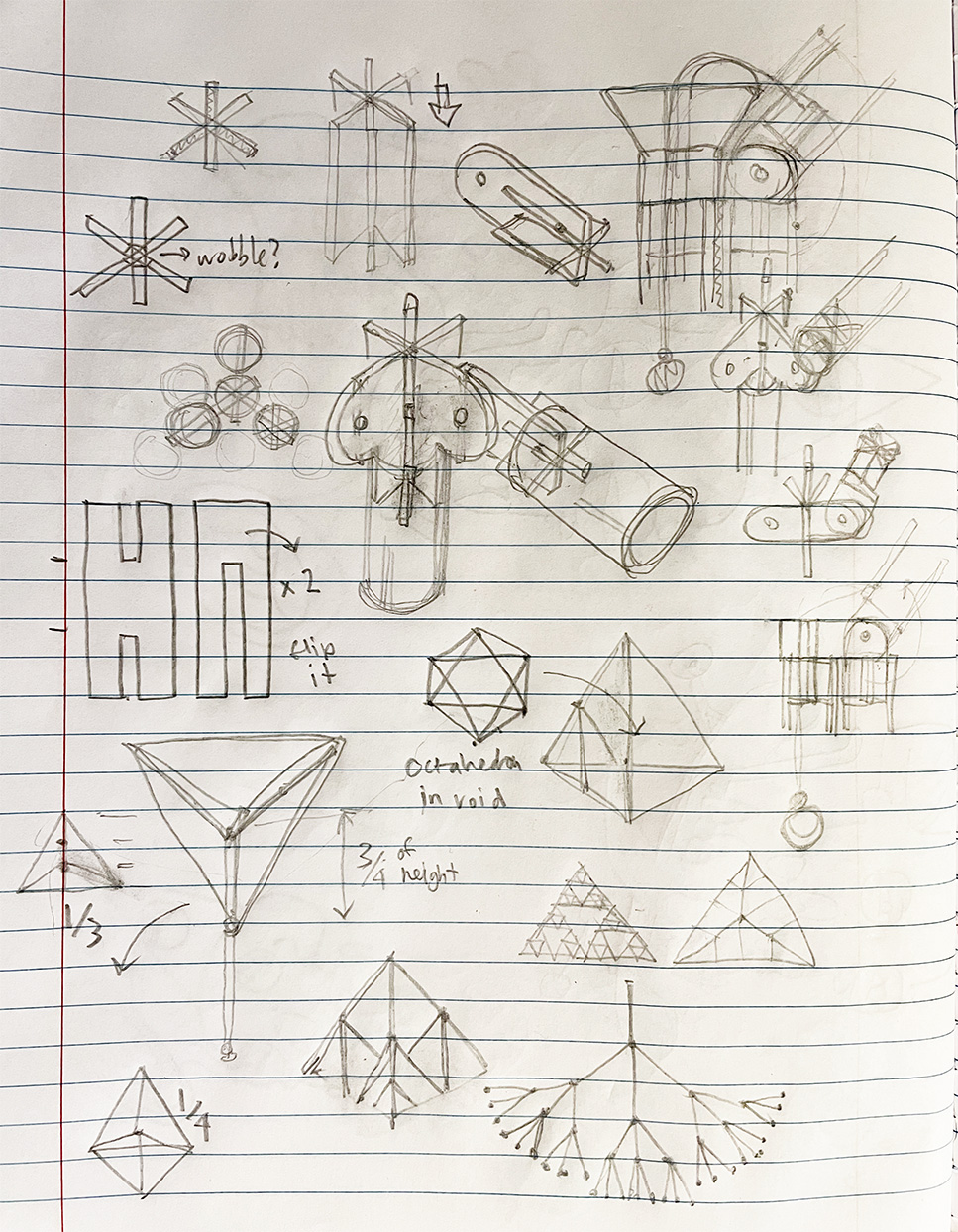
source: jerome's notebook
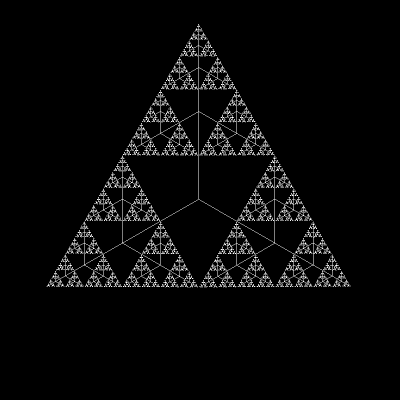
source: wikimedia - ruggiero
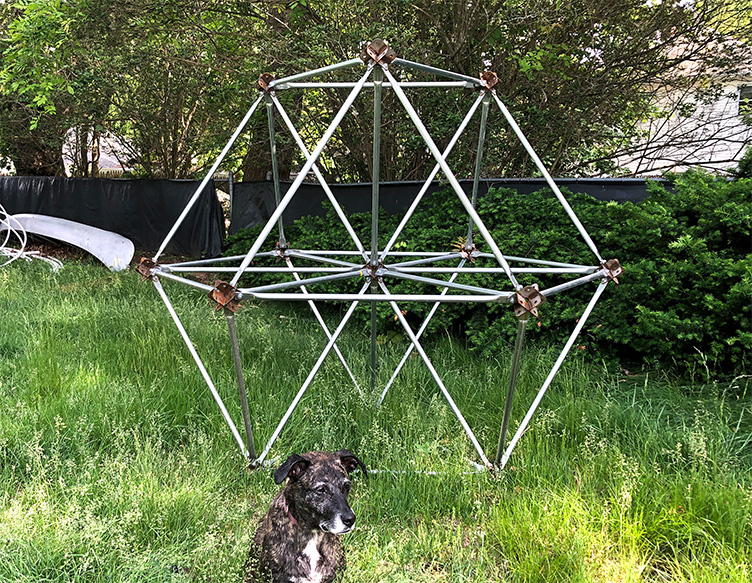
octet spaceframe in my backyard
this work builds off my thesis interests.
i have been building spaceframe structures using 3/4" conduit
and custom designed connectors (see wk 2.)
I referenced this "how to make struts" tutorial for diy geodesic domes.
the struts are simple to make with:
horizontal band saw
screw press
benchtop punch
i built a snub cube using the same method
for Tom Sachs' mit architecture I.S.R.U challenge
i now only use 5/16ths hardware for everything.
also. my "how make metal triangular polyhedra" youtube
progress from week 6
exploring sheet material

tri-lap joint

tetra pods

109.471 degrees
progress from week 8
more geometry exploration
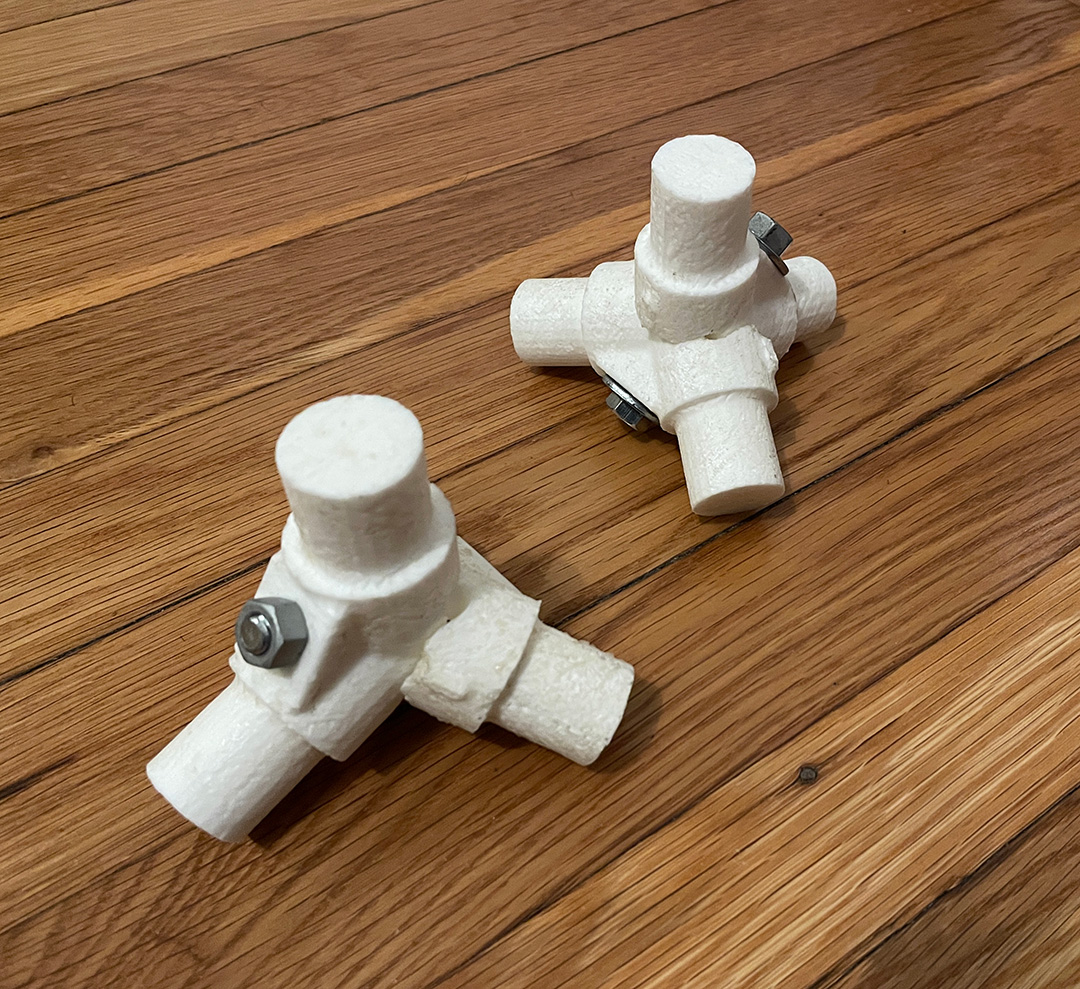
2x tetra / diamond cubic connectors
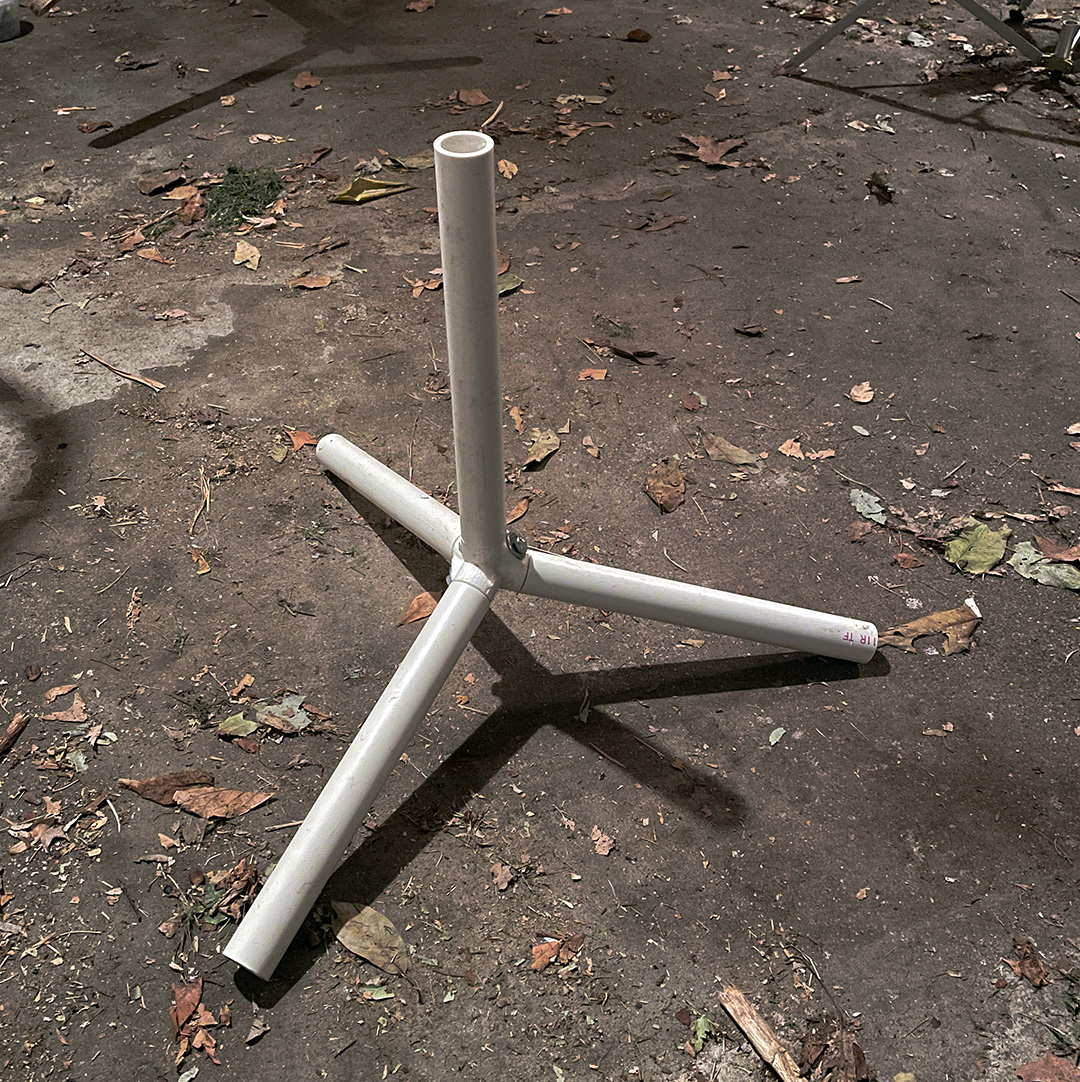
connected to 1" pvc
playing with tripod mechanism
umbrella mechanism
so i tried making my own tripod slip joint for 3/4" pipe
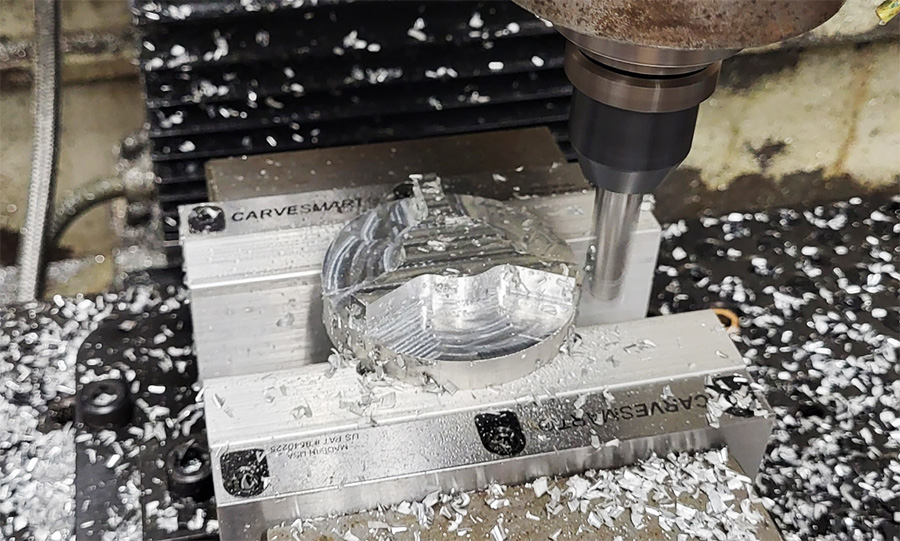
milling with soft jaws

tripod slip joint
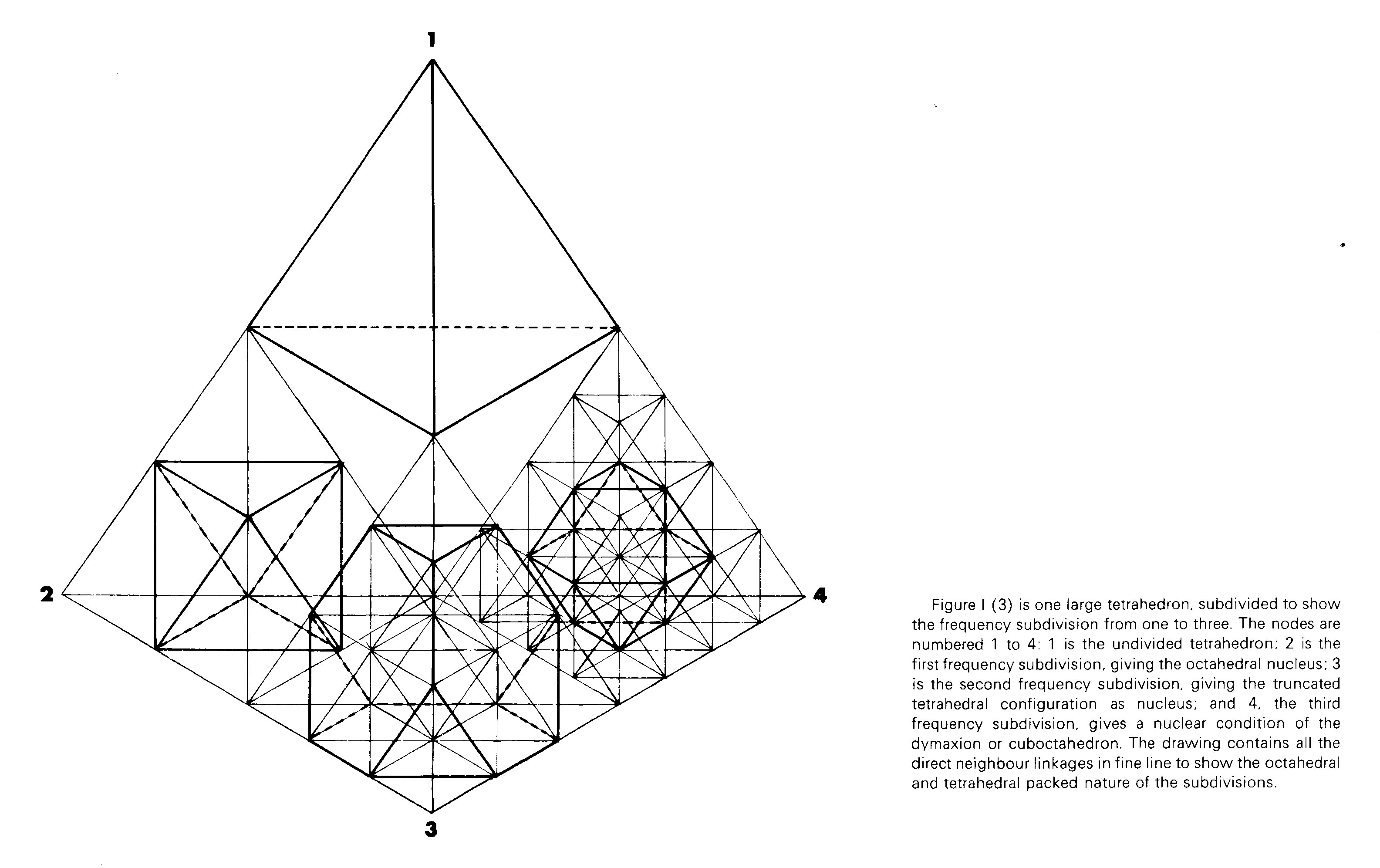
source: keith critchlow - order in space
divide a tetrahedron and you get smaller tets and an octahedron
divide again and you get even smaller tets and a truncated tet
divide again and you get a cuboctahedron
then you get a truncated octahedron (permutahedron-4)
then you get a truncated cuboctahedron
so on and so forth..
apparently a tetrahedron has a hausdorff dimension of 2.
- link ron eglash, chpt in african fractals.
how is a 3-dimensional object also a 2-dimensional fractal?
more dimensions?
the family of triangles in higher euclidean space
is the simplex.
- link > wheeler, geometrodynamics / gravitation deals with 4 and 5 simplices.
pg 472 dewitt / dewitt - relativity, groups and topology
bekenstein-bound > S= A/4 -> total entropy on a black hole's event horizon.
jakob schwichtenberg - physics from symmetry can derive particles and forces, but it cannot derive gravity, constants of nature, and also the number three. there are 3 gauges to 3 fundamental forces of the standard model, 3 lepton generations...etc